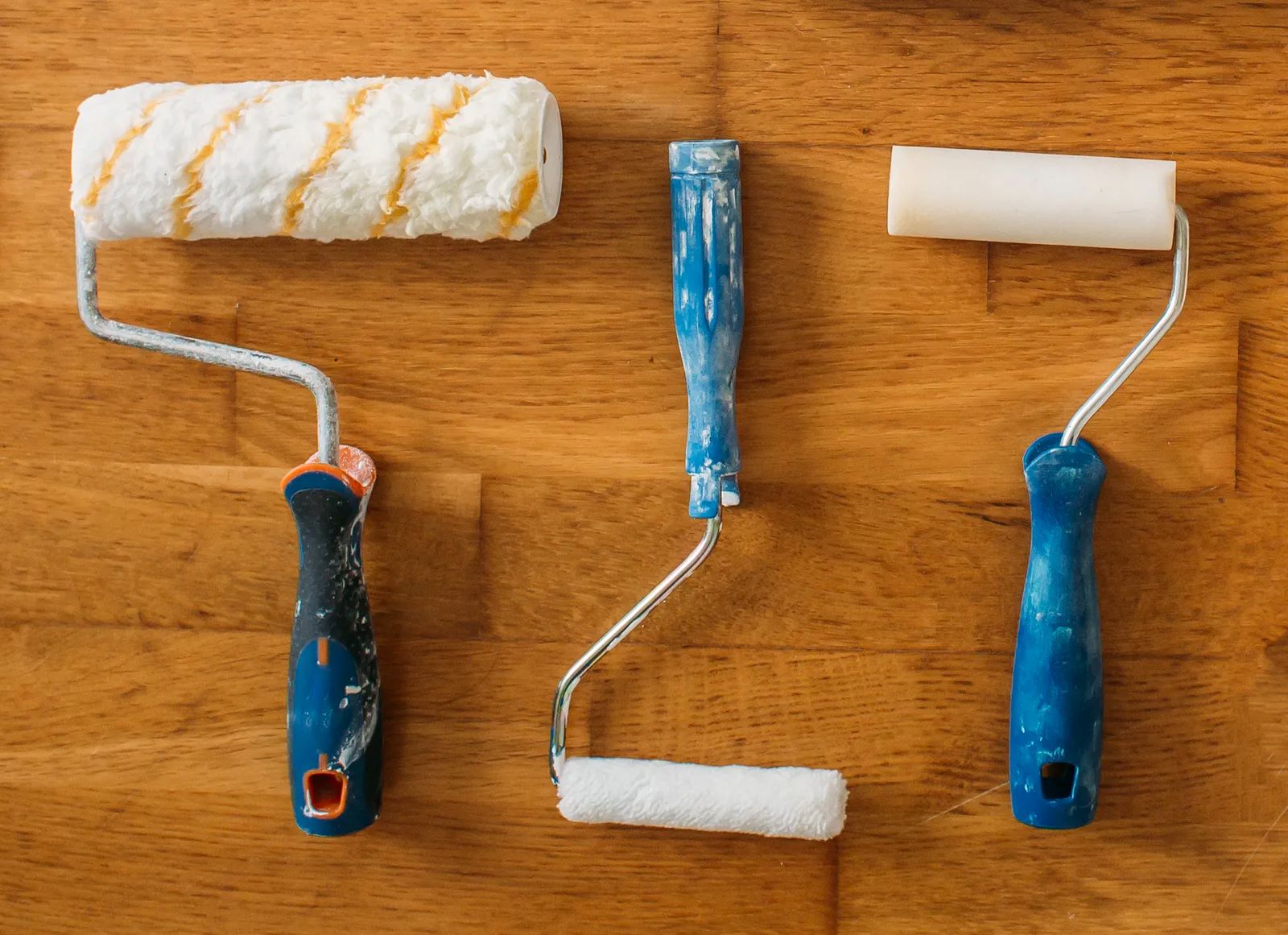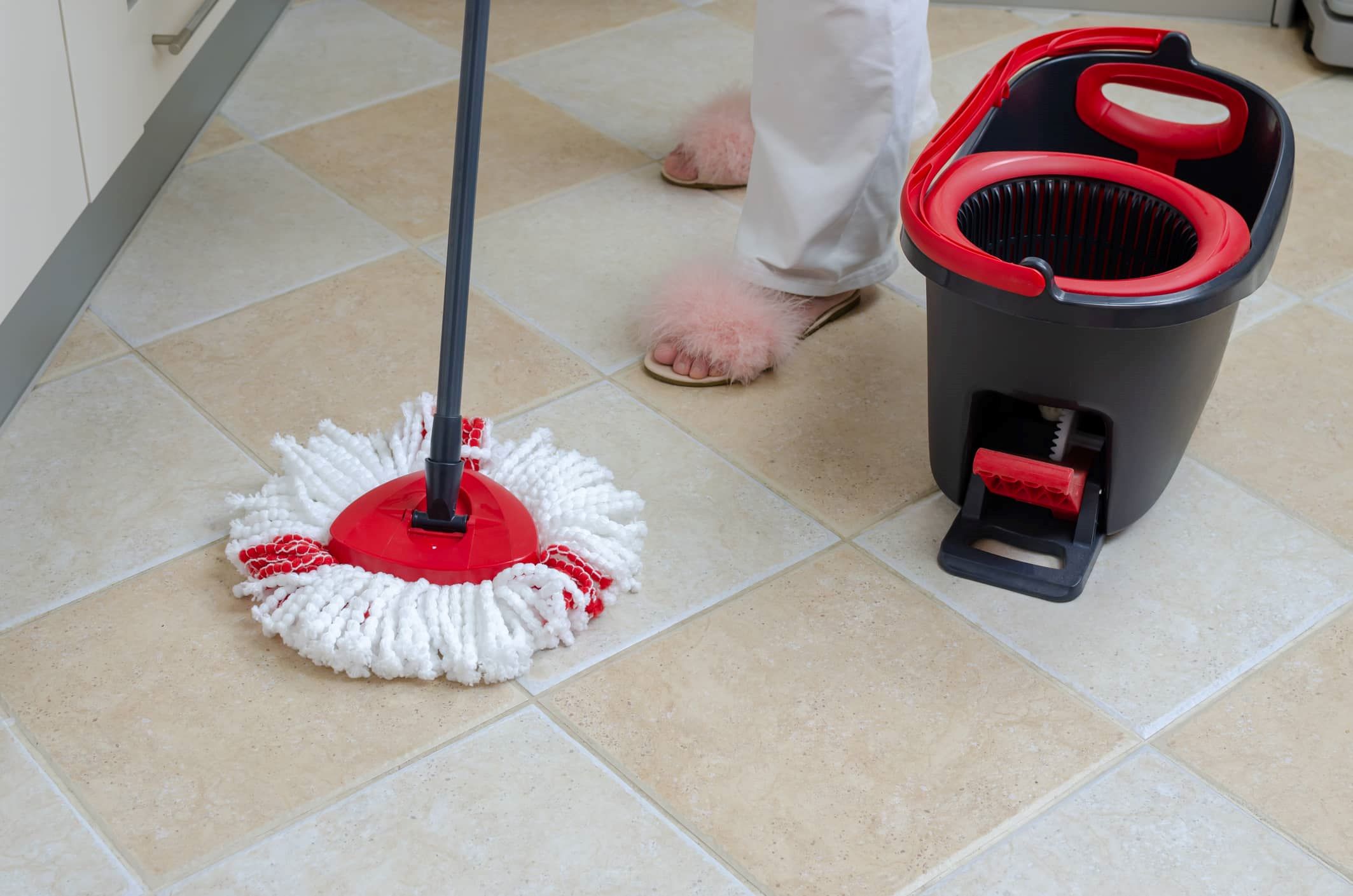

Articles
How To Store Sticky Lint Roller
Modified: December 7, 2023
Learn how to properly store sticky lint roller and keep it ready for future use. Read our informative articles for tips and tricks on maintaining the adhesive surface.
(Many of the links in this article redirect to a specific reviewed product. Your purchase of these products through affiliate links helps to generate commission for Storables.com, at no extra cost. Learn more)
Introduction
Lint rollers have become an essential tool in our daily lives to keep our clothes, furniture, and belongings free from lint, pet hair, and other unwanted particles. Their sticky adhesive sheets efficiently catch and remove these pesky elements, leaving our belongings clean and presentable. However, many people overlook the importance of proper storage for their sticky lint rollers. Storing them correctly can not only maximize their effectiveness but also prolong their lifespan.
In this article, we will delve into the world of sticky lint roller storage and provide you with practical tips on how to store them properly. Whether you have a lint roller for personal use or for a business, these guidelines will help you maintain the stickiness and overall quality of your lint roller.
We will start by understanding the unique features and functionality of sticky lint rollers. This will enable us to choose the right storage option that suits our needs. We will then explore various storage methods and offer recommendations to help you keep your lint roller in top shape. Additionally, we will share some useful tips for maintaining stickiness and answer frequently asked questions to address common concerns.
So, if you’re ready to learn how to keep your sticky lint roller in excellent condition, let’s dive in!
Key Takeaways:
- Proper storage of sticky lint rollers is essential for maintaining their stickiness and effectiveness in removing lint and pet hair. Choose the right storage option to protect and prolong the lifespan of your lint roller.
- Regularly replacing adhesive sheets and following storage tips will ensure optimal stickiness and performance of your sticky lint roller. Keep it clean, dry, and protected to enjoy lint-free belongings for longer.
Understanding Sticky Lint Rollers
Sticky lint rollers are designed to effectively remove lint, pet hair, dust, and other small particles from various surfaces. They consist of a handle and a roll of adhesive sheets that collect the unwanted debris. When rolled over a surface, the sticky sheets attract and pick up the lint or hair, leaving the surface clean and lint-free.
The adhesive sheets are typically made of a special tacky material that has enough stickiness to catch the lint and hair but not too much that it damages the surface. This balance ensures effective cleaning without causing any harm to your clothing, upholstery, or other belongings.
Lint rollers come in different sizes to cater to different applications. There are compact travel-sized rollers for on-the-go use, as well as larger ones for thorough cleaning at home or in a commercial setting. Some lint rollers even have reusable adhesive sheets that can be washed and reused, while others require you to replace the sheets once they are full.
Knowing the features and capabilities of sticky lint rollers is crucial for selecting the appropriate storage option. It’s also essential to understand that the stickiness of the adhesive sheets is directly influenced by the way the lint roller is stored. Improper storage can lead to diminished stickiness, rendering the lint roller less effective in its cleaning task.
Next, we will explore the different storage options available for sticky lint rollers and provide guidance on choosing the right one.
Choosing the Right Storage Option
When it comes to storing sticky lint rollers, there are a few factors to consider to ensure optimal effectiveness and longevity. Here are some key considerations when choosing the right storage option:
- Coverage: It’s important to choose a storage option that can fully cover the adhesive sheets of the lint roller. This prevents dust, hair, or other contaminants from sticking to the exposed adhesive, which can reduce its stickiness over time.
- Air circulation: While it’s essential to cover the lint roller, it’s equally crucial to provide adequate air circulation to prevent the build-up of moisture. Excessive moisture can affect the stickiness of the adhesive sheets. Look for storage options that offer a balance between coverage and ventilation.
- Protection: Find a storage option that protects the lint roller from any potential damage. For example, if you’re traveling, choose a storage case with a sturdy structure to prevent any bending or crushing of the lint roller.
- Convenience: Consider the ease of access and portability of the storage option. If you use your lint roller frequently, opt for a storage solution that allows for quick and hassle-free access so that you can easily grab it whenever you need it.
Now that you have a basic understanding of what to look for in a storage option, let’s explore some popular methods of storing sticky lint rollers.
Storing Sticky Lint Rollers Properly
Proper storage of sticky lint rollers is essential to maintain their stickiness and optimize their performance. Here are some effective methods for storing your lint roller:
- Covered Container: One of the simplest and most effective ways to store a lint roller is by using a covered container. Look for a container or a case specifically designed for lint roller storage. Make sure it has a lid that securely seals to keep the adhesive sheets protected and dust-free. This method provides excellent coverage and protects the lint roller from damage.
- Plastic Bag: If you don’t have a dedicated storage container, a sealed plastic bag can serve as a temporary solution. Place the lint roller inside the bag, seal it tightly, and store it in a clean and dry area. While this method may not offer as much protection as a dedicated container, it still helps to keep the lint roller clean and prevents debris from sticking to the adhesive sheets.
- Hanging Storage: Another option is to hang your lint roller in a designated spot. This method is particularly useful if you use your lint roller frequently. You can attach adhesive hooks or clips to a wall or the inside of a closet door and hang the lint roller by its handle. Ensure that the adhesive sheets are fully covered with a protective cap or sleeve to prevent dust accumulation.
- Dedicated Drawer: If you have a spare drawer available, designate it for lint roller storage. Place the lint roller inside the drawer and ensure it is fully closed to keep the lint roller protected. This method provides a convenient storage solution and keeps the lint roller out of sight when not in use.
- Vertical Stand: Some lint roller brands offer vertical stands that hold the lint roller in an upright position. These stands have a base that keeps the lint roller secure while allowing for proper ventilation. Storing your lint roller in a vertical position helps to prevent any deformation of the adhesive sheets and keeps them clean and ready for use.
Choose the storage method that suits your needs and preferences, ensuring that it provides coverage, protection, and convenience. Now that you know how to store your lint roller properly, let’s explore some tips for maintaining its stickiness.
To store a sticky lint roller, place a rubber band around the roller to prevent it from collecting dust and debris when not in use. This will help maintain its stickiness for longer.
Tips for Maintaining Stickiness
To ensure that your sticky lint roller remains effective in capturing lint, hair, and other particles, it’s essential to maintain its stickiness over time. Here are some helpful tips:
- Store in a clean and dry area: Moisture and dirt can reduce the stickiness of the adhesive sheets. Therefore, it’s crucial to store your lint roller in a clean and dry area, away from sources of moisture such as bathrooms or kitchens.
- Avoid contact with fabric or other surfaces: When storing your lint roller, make sure it does not come into contact with fabric, carpet, or other adhesive surfaces. This can transfer debris and affect the stickiness of the adhesive sheets. Use protective caps, sleeves, or containers to keep the lint roller separated from other surfaces.
- Replace adhesive sheets when necessary: Over time, the adhesive sheets of your lint roller may become filled with lint and lose their stickiness. If you notice a significant decrease in the effectiveness of the lint roller, it’s time to replace the adhesive sheets. Follow the manufacturer’s instructions for replacing the sheets or consider purchasing a refill pack.
- Avoid exposure to extreme temperatures: Extreme heat or cold can affect the stickiness of the adhesive sheets. Avoid storing your lint roller in areas exposed to direct sunlight or extreme temperature fluctuations. Opt for a storage location with moderate temperatures to maintain the adhesive’s effectiveness.
- Keep away from pets: If you have pets, it’s important to keep the lint roller stored in a secure place where your furry friends can’t access it. Pets may be tempted to chew on the adhesive sheets, which can damage the stickiness and possibly pose a health hazard.
- Gently roll on clean surfaces: When using your lint roller, make sure to roll it gently on clean surfaces. Avoid pressing too hard, as this can cause the adhesive to become less effective or leave residue on the surface. Consistent but gentle rolling will ensure optimal stickiness and efficient cleaning.
By following these tips, you can maintain the stickiness of your lint roller and extend its lifespan.
Next, let’s address some frequently asked questions about sticky lint rollers.
Read more: How To Store Roller Skates
Frequently Asked Questions
Here are some common questions about sticky lint rollers:
- Can I reuse the adhesive sheets on a sticky lint roller?
- How often should I replace the adhesive sheets?
- Can I store multiple lint rollers together?
- Can I clean the adhesive sheets on a lint roller?
- Can I use the lint roller on delicate fabrics?
It depends on the type of lint roller you have. Some lint rollers have reusable adhesive sheets that can be washed and reused. However, most lint rollers have disposable adhesive sheets that need to be replaced once they are full.
The frequency of replacing adhesive sheets can vary depending on the amount of use and the amount of debris they collect. As a general guideline, it’s recommended to replace the adhesive sheets when they are visibly filled with lint or when the stickiness is significantly reduced.
Yes, you can store multiple lint rollers together as long as each lint roller has its own protective cover or sleeve to prevent the adhesive sheets from sticking to each other.
No, cleaning the adhesive sheets is not recommended. Attempting to clean the sheets can remove the stickiness and render them ineffective. It’s best to replace the adhesive sheets when they are no longer collecting debris efficiently.
While lint rollers are generally safe to use on most fabrics, it’s a good idea to test it on a small, inconspicuous area before using it on delicate fabrics. This will ensure that the adhesive doesn’t damage or leave residue on the fabric.
If you have any other questions or concerns about sticky lint rollers, consult the manufacturer’s guidelines or reach out to their customer support for assistance.
Now, let’s wrap up this article.
Conclusion
Proper storage of sticky lint rollers is crucial for maintaining their stickiness and maximizing their effectiveness in removing lint, pet hair, and other unwanted particles. By understanding the unique features of lint rollers and choosing the right storage option, you can ensure that your lint roller remains in top shape.
Keeping your lint roller in a covered container, sealed plastic bag, or hanging storage method can provide the necessary coverage and protection. Storing it in a clean and dry area, away from extreme temperatures and pets, will further help maintain its stickiness.
Regularly replacing the adhesive sheets when they are full or no longer effective will ensure optimal cleaning results. Avoid trying to clean the adhesive sheets, as this may diminish their stickiness.
By following these tips for storing and maintaining stickiness, you can enjoy the full benefits of your sticky lint roller for an extended period.
Remember to consult the manufacturer’s instructions for specific care and storage guidelines for your lint roller, as different brands may have unique recommendations.
Now that you have a comprehensive understanding of how to store and maintain sticky lint rollers, you can confidently keep your belongings clean and lint-free in style!
Frequently Asked Questions about How To Store Sticky Lint Roller
Was this page helpful?
At Storables.com, we guarantee accurate and reliable information. Our content, validated by Expert Board Contributors, is crafted following stringent Editorial Policies. We're committed to providing you with well-researched, expert-backed insights for all your informational needs.















0 thoughts on “How To Store Sticky Lint Roller”